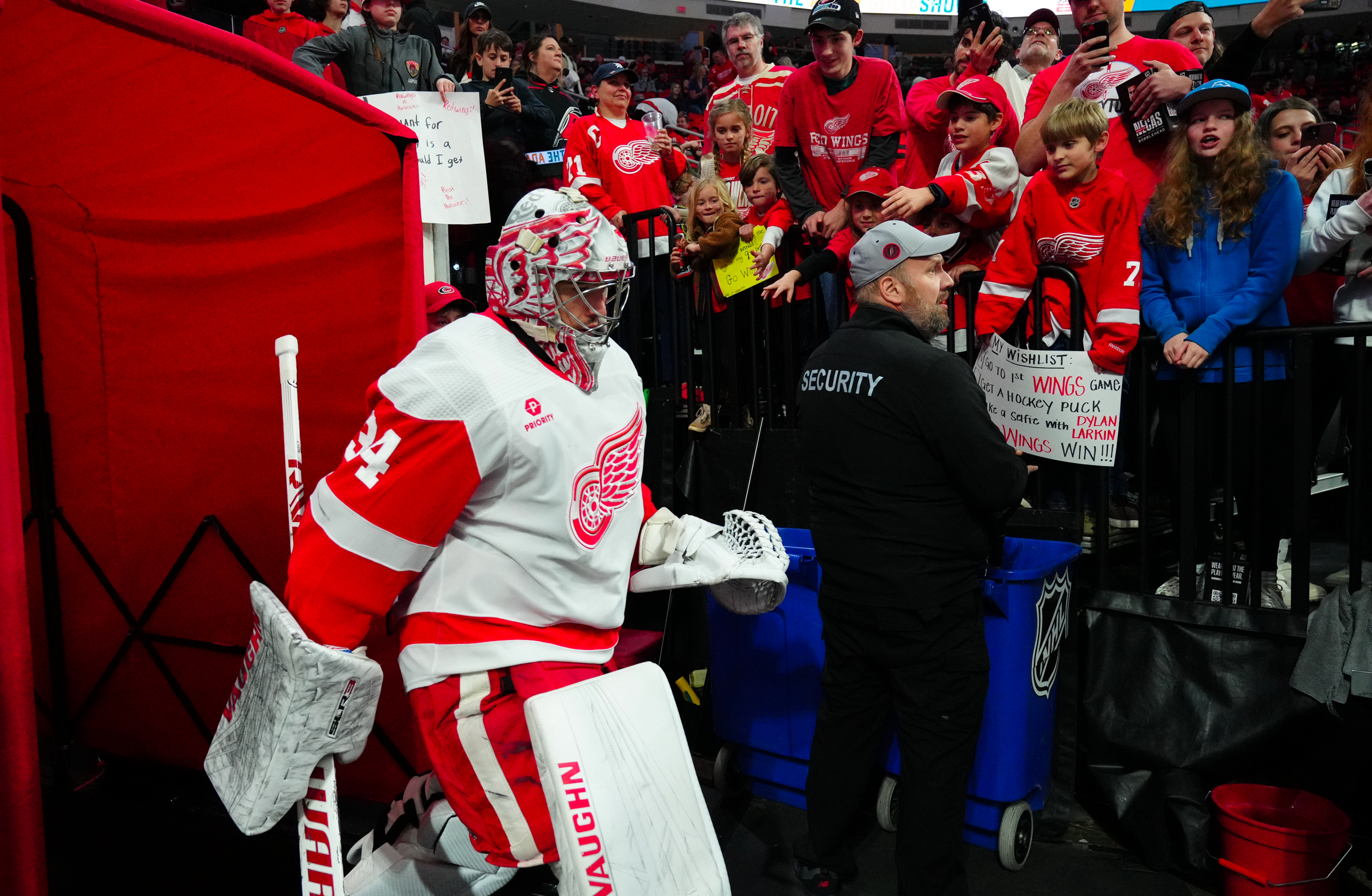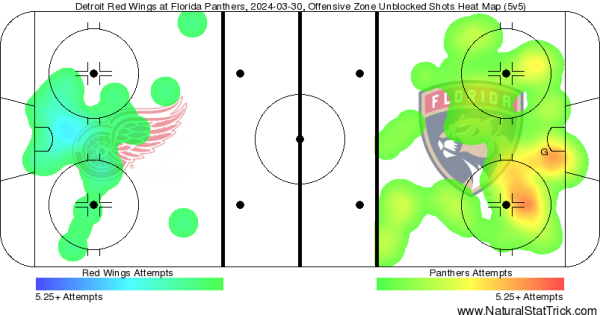
A dive into the underlying numbers from the Red Wings' 3-2 shootout loss to the Panthers Saturday afternoon
A dive into the underlying numbers from the Red Wings' 3-2 shootout loss to the Panthers Saturday afternoon

Yesterday afternoon in Sunrise, the Red Wings suffered a 3-2 shootout defeat to the Florida Panthers. Falling in the shootout, Detroit did earn a point, but considering that the Red Wings led for more than 40 minutes and the desperation of their present playoff chase, that point isn't tremendous consolation. For a clearer sense of how this game unfolded, let's take a look at the underlying numbers.
The Big Picture
-The Panthers earned a 3.76-2.39 advantage in expected goals, per MoneyPuck. It was an advantage Florida built slowly and surely over the course of the afternoon. At the time Robby Fabbri scored midway through the first period, Detroit led 1.135-1.005 by xG in what had been a fast-paced start to the action. By the end of the first, the Panthers still trailed 1-0 but led 1.328-1.065 by xG. After the second, that margin stretched to 2.529-1.566. At the end of the third, it was 3.538-2.274.

-As the below heat map of five-on-five unblocked shots shows, Florida produced a lot of offense down low in the offensive zone. Those weren't all high-danger chances, but it's a good illustration of the Panthers' style under Paul Maurice. The strength of their game offensively is their ability to apply pressure off the cycle below the face-off dots, and that's what they did Saturday. On the Detroit side of the ledger, the volume of offense is concerning, though the Red Wings did drive a high percentage of that offense to the slot.

-Over the course of 60 minutes, the Panthers were decidedly the superior team at five-on-five, before going on to earn the win after a scoreless three-on-three overtime period before finding the win in the shootout. Per Natural Stat Trick, at five-on-five, the Ice Cats held the Red Wings to a 26.21% CorsiFor, a 31.82% share of scoring chances, a 41.18% share of high-danger chances, and a 29.25% share of xG.
Detroit managed to hang around despite Florida's thorough control of five-on-five play in large part because of its advantage on special teams. The Red Wings power play connected twice on six attempts, while the Panthers failed to score on their lone power play try. However, not even a hot night with the man advantage was enough to overcome Florida's five-on-five dominance.
Individual Impacts
-The biggest reason besides the power play Detroit stuck around in this game was Alex Lyon. Lyon faced 38 shots and stopped 36 of them, good for a Goals Saved Above Expected of 1.76 according to MoneyPuck. It was, by a somewhat considerable distance, Lyon's best performance of the month of March.
-Only three Red Wing lines played over five minutes together at five-on-five, and none of those three earned an on-ice xG share greater than 50%.
Alex DeBrincat, Dylan Larkin, and Patrick Kane reunited on the top line, playing 7:59 together. They were out-chanced 0.191-0.256 by xG. It wasn't an especially convincing first game back for this unit. It was of course a difficult match-up against a stingy defensive team, and the line played mostly against Florida's top line and the Gustav Forsling-Aaron Ekblad D pair, but, in part for that reason, it was a night when you'd hope to get a bit more out of a loaded up top line at five-on-five.
Still, it's a trio that's shown offensive promise earlier in the season, and with the Red Wings starving for five-on-five offense, it makes a good bit of sense to keep them together moving forward. Larkin was also the Red Wings' leader in individual xG at 0.51.
Michael Rasmussen, Andrew Copp, and Christian Fischer composed Detroit's second busiest line, playing 7:05 together at five-on-five. They were out-chanced 0.212-0.337 by xG without any actual goals in either direction. That's not an ideal performance nor a terrible one but more than anything a middling one.
The trio of David Perron, J.T. Compher, and Lucas Raymond played 6:33 to an 0.351-0.683 disadvantage at five-on-five. Of the Red Wings' top three line, this is the one whose performance is most concerning by the numbers, though their minutes were also scoreless in both directions.
-On the back end, Ben Chiarot and Moritz Seider had a difficult night together. In 18:44 at five-on-five (a heavy workload), they played to an 0.157-1.086 disadvantage by xG. It was a challenging match-up (primarily against Florida's top line of Aleksander Barkov, Carter Verhaeghe, and Sam Reinhart), but, while they didn't concede a goal, this was not an inspiring performance for Chiarot-Seider, which had previously been reasonably effective in Jake Walman's absence.
Simon Edvinsson and Jeff Petry enjoyed another effective five-on-five night together. Their 12:21 was scoreless, but they put up an 0.676-0.514 xG advantage in those minutes. That's the second successive game for them above water by on-ice xG share, which hadn't always been the case during their first few games together.
Got a Question?
We've got answers. Submit your questions to THN Detroit's first ever mailbag today. We'll give you our thoughts on all the Detroit hockey topics you're wondering about. A few lucky questions will be featured on next week's episode of The Silky Mitten State podcast. Submit your questions on this Google Form.
Also from THN Detroit
What's Next for Sergei Fedorov?
Despite Larkin's Sacrifice, Red Wings Drop Playoff-like Game to Florida, 3-2 in Shootout
Red Wings Need Some Help to Make the Playoffs
Petry, Rasmussen, an Ugly Loss, and the Challenge of Creating Order out of Chaos
